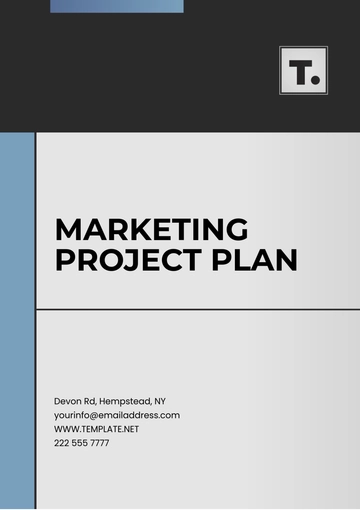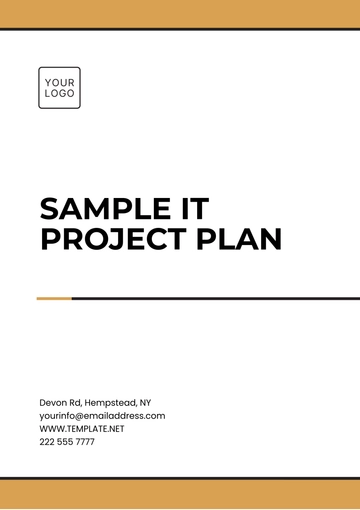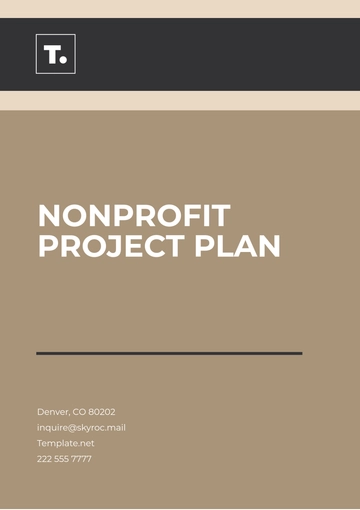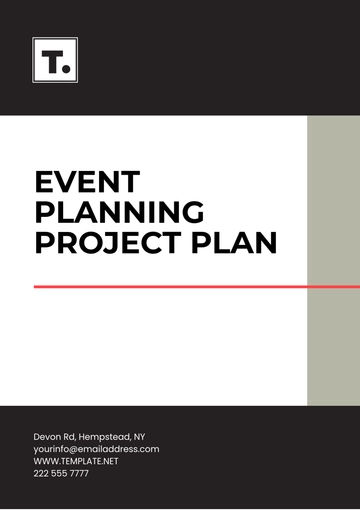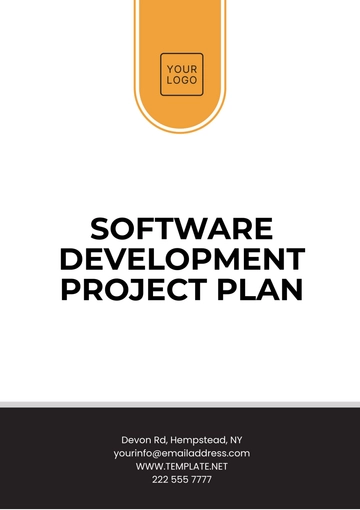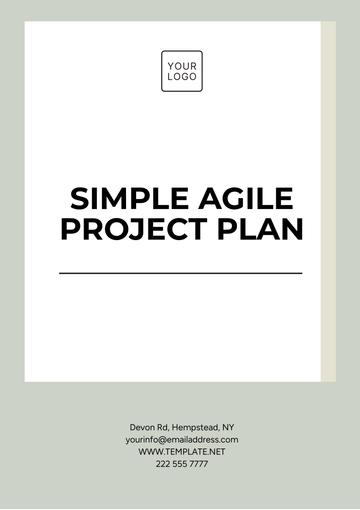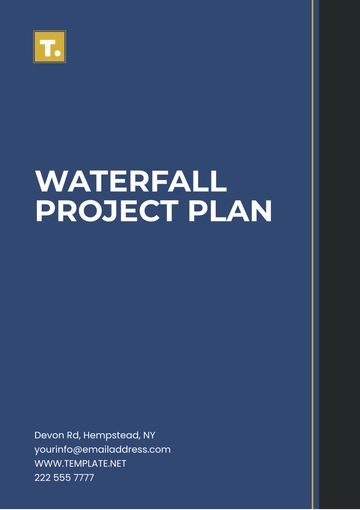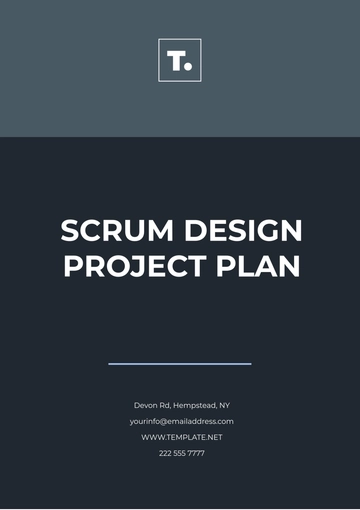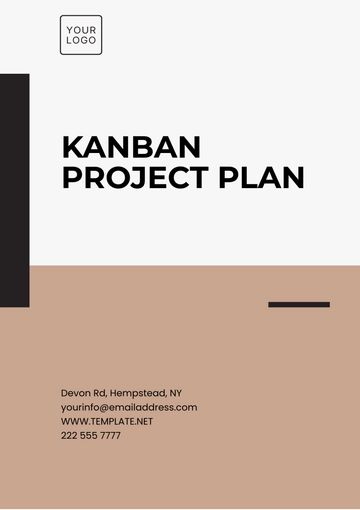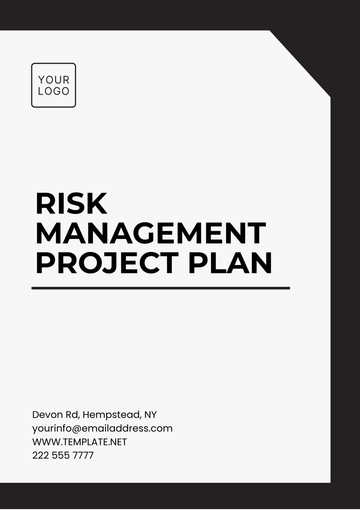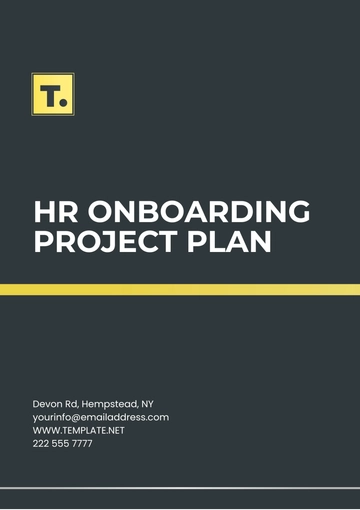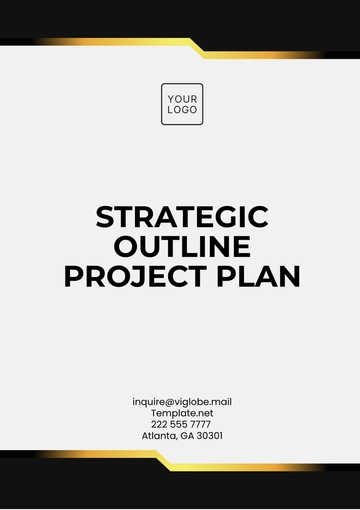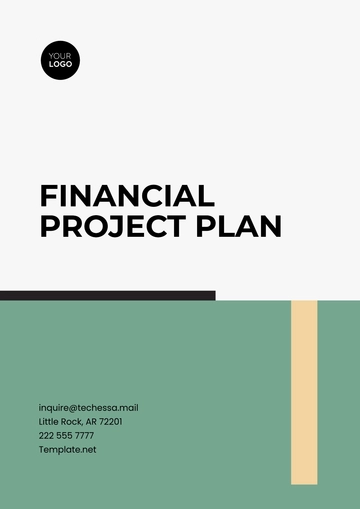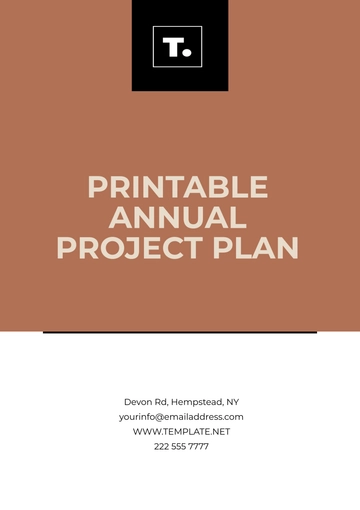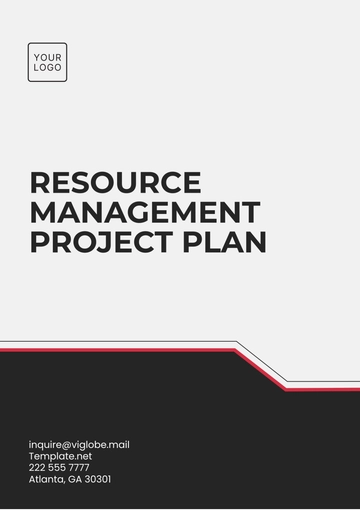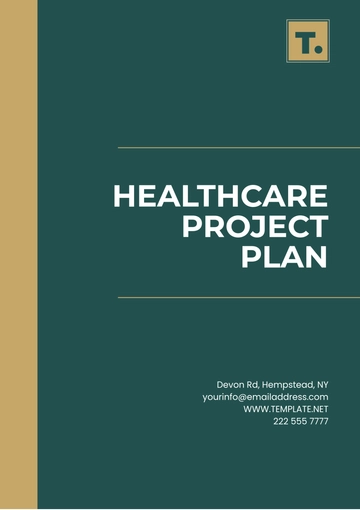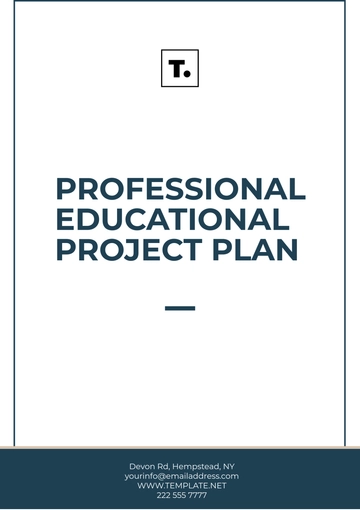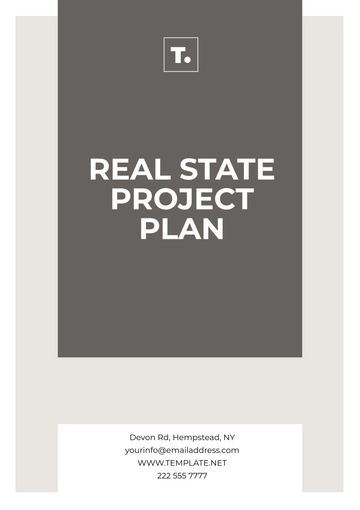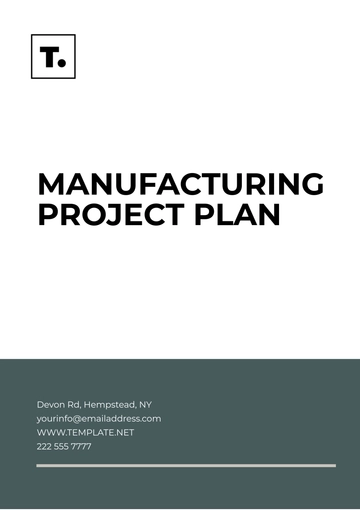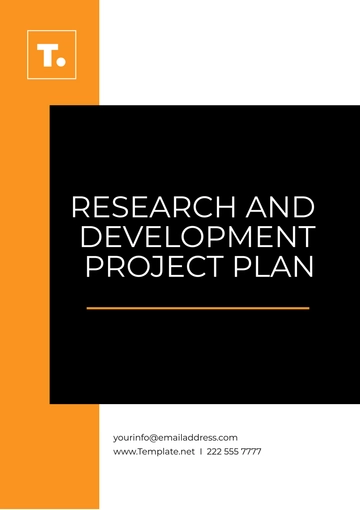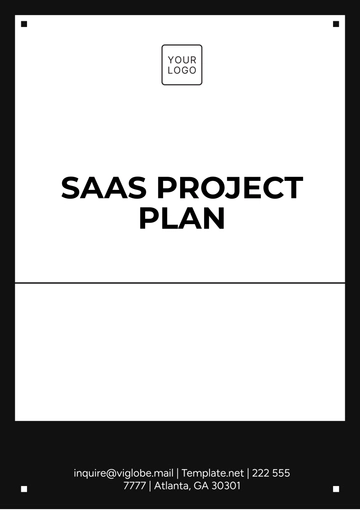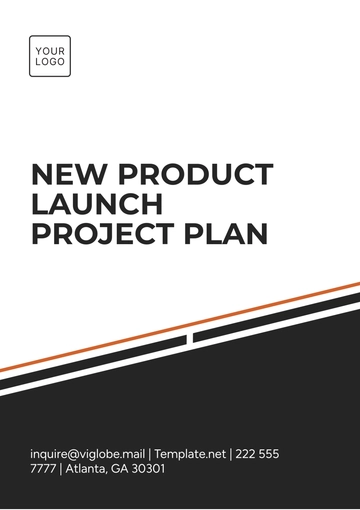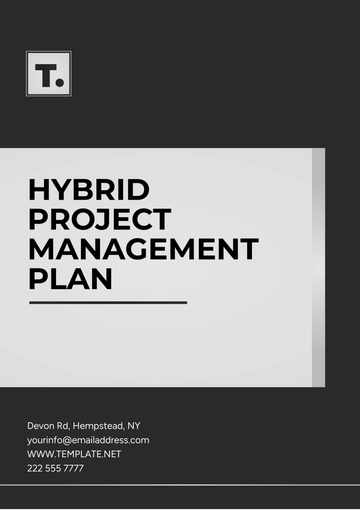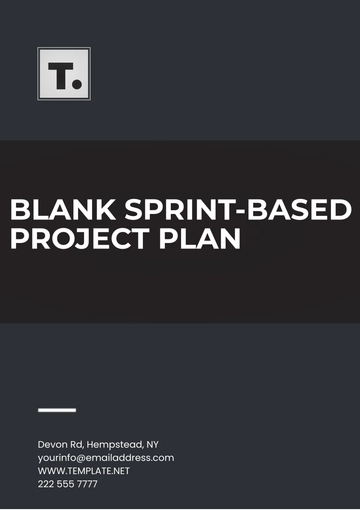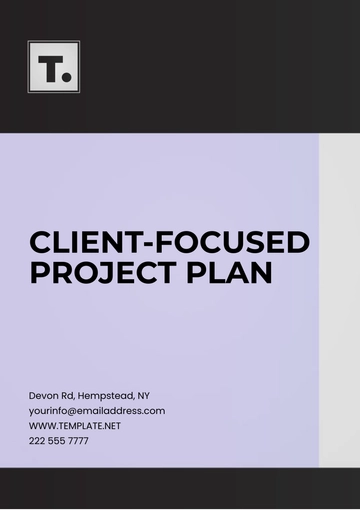Free Advertising Comprehensive Campaign Project Plan
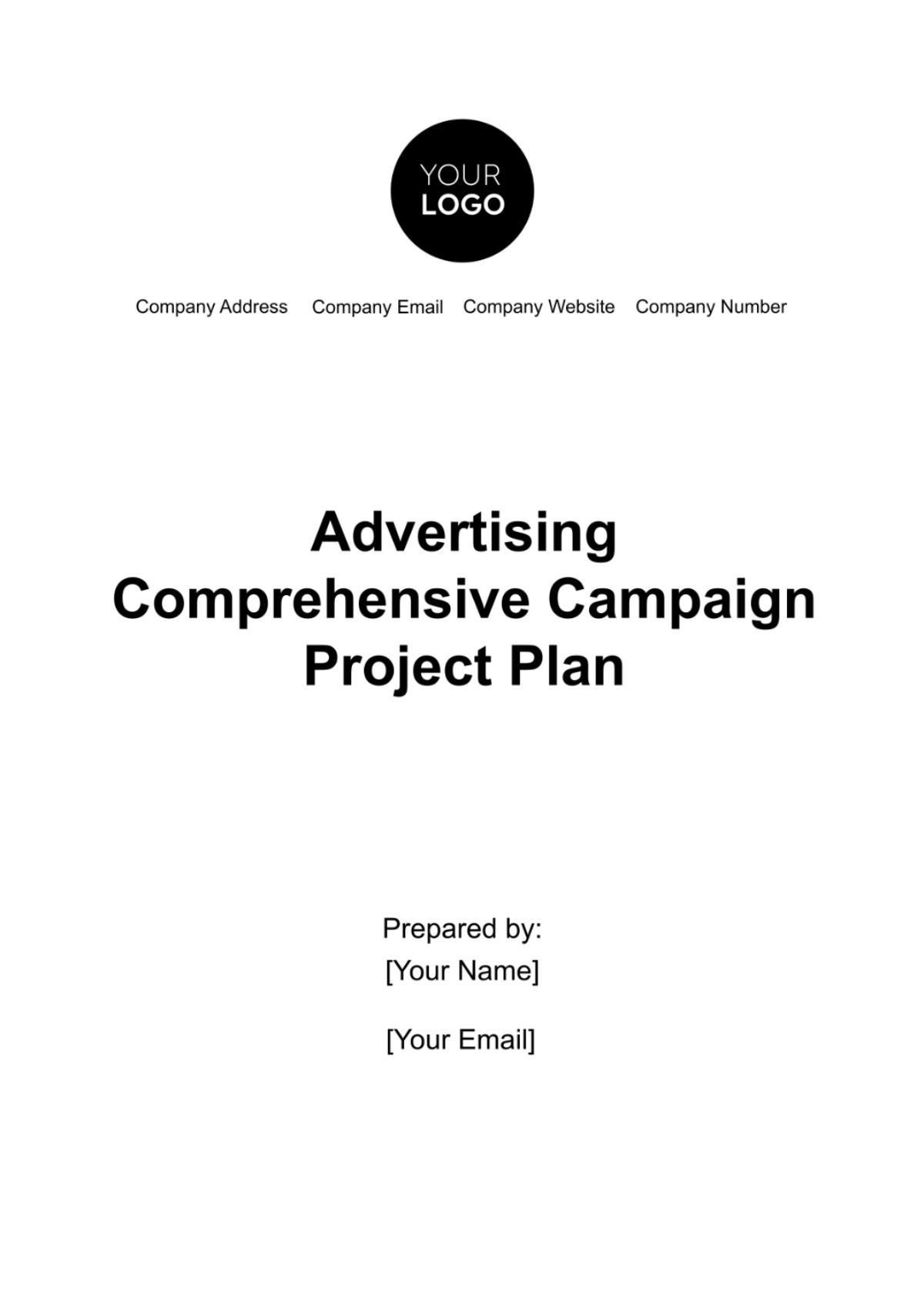
I. Executive Summary
A. Overview
[Your Company Name], a leading provider of [describe your industry or products], is embarking on an ambitious advertising campaign to launch our latest product, [Product/Service Name]. This comprehensive campaign aims to establish [Product/Service Name] as the premier solution in the market, driving brand recognition and boosting sales.
B. Objectives
Increase brand awareness by [25%] within the first three months of the campaign.
Generate 500 qualified leads within the first month of the campaign launch.
Achieve a 20% increase in website traffic within the first two months of the campaign.
C. Scope
The campaign will encompass various marketing channels, including digital advertising, social media, print media, and promotional events.
Target Audience: The campaign will target tech-savvy individuals aged [25-40], primarily professionals and early adopters of innovative technology.
Duration: The campaign will run from [April 1, 2024], to [June 30, 2024].
II. Campaign Strategy
A. Target Audience Analysis
Demographics | Psychographics | Customer Personas |
|---|---|---|
Age: 25-40 | Tech-savvy | Persona 1: The Executive |
Gender: Both | Early adopters | Persona 2: The Entrepreneur |
Income: [Income bracket] | Value convenience | Persona 3: The Innovator |
B. Key Messaging
Key Messages:
Seamlessly integrate [Product/Service Name] into your [industry] arsenal for unparalleled efficiency.
Elevate your [industry] experience with intuitive features and cutting-edge technology.
Tone and Voice: Our communication will be characterized by a blend of professionalism, innovation, and customer-centricity, resonating authentically with our target audience's aspirations and needs.
C. Channels and Tactics
Digital Advertising
a. Google Ads: Precision-targeted search and display ads meticulously crafted to capture the attention of [Product/Service Name]'s target demographic.
b. Social Media Ads: Engaging and visually compelling sponsored content on Facebook, Instagram, and LinkedIn, harnessing the power of social connectivity to amplify brand visibility.
c. Display Advertising: Strategic placement of banner ads on prominent online platforms frequented by our target audience, ensuring maximum exposure and engagement.
Print Advertising
a. Magazines: High-impact full-page advertisements strategically positioned within leading [industry] and lifestyle publications, catering to the discerning tastes of our target demographic.
b. Newspapers: Dynamic quarter-page ads featured in select urban newspapers, capturing the attention of professionals and influencers within key metropolitan hubs.
Promotional Events
a. Launch Event: A captivating and immersive product launch event scheduled for [April 15, 2024], at [Venue Name], offering attendees an exclusive firsthand experience of [Product/Service Name]'s transformative capabilities.
b. In-store Promotions: Engaging demonstrations and enticing promotional offers deployed across select retail outlets, driving foot traffic and fostering direct engagement with prospective customers.
D. Budget Allocation
The campaign budget has been meticulously allocated to ensure optimal resource utilization and maximum impact across all marketing initiatives.
Budget Allocation Breakdown:
Digital Advertising: [$00,000]
Print Advertising: [$00,000]
Promotional Events: [$00,000]
Contingency Budget: A prudent allocation of [10%] of the total budget has been earmarked to address unforeseen exigencies and capitalize on emerging opportunities, safeguarding the campaign's overarching objectives and strategic imperatives.
III. Campaign Execution Plan
A. Timeline
Milestones and Deadlines:
March 1, 2024 :Finalize creative briefs, design assets, and advertising copy.
March 15, 2024: Launch digital advertising campaigns across Google Ads and social media platforms.
April 1, 2024: Deploy print ads in selected magazines and newspapers.
April 15, 2024: Host the grand launch event at [Venue Name], featuring product demonstrations, keynote presentations, and interactive sessions.
May 1, 2024: Commence in-store promotions at designated retail locations, accompanied by product displays and promotional offers.
June 30, 2024: Conduct a comprehensive review of campaign performance metrics, including brand awareness, lead generation, website traffic, and sales conversions, to glean actionable insights and refine future marketing strategies.
B. Creative Assets
Design Requirements:
Digital Ads: A diverse range of static and animated banners optimized for various digital platforms, ensuring seamless integration and maximum impact.
Social Media Posts: Engaging visuals, compelling copy, and interactive content tailored to resonate with our target audience across Facebook, Instagram, and LinkedIn.
Print Ads: High-resolution imagery, captivating headlines, and concise messaging encapsulating [Product/Service Name]'s value proposition and competitive advantage, meticulously crafted for optimal impact in print media formats.
C. Media Buying
Digital Advertising:
Google Ads: Strategic bidding and keyword optimization to maximize ad visibility and click-through rates, supported by ongoing performance monitoring and optimization.
Social Media Ads: Targeted audience segmentation and ad placement across Facebook, Instagram, and LinkedIn, leveraging advanced analytics and A/B testing to optimize campaign effectiveness.
Print Advertising:
Magazines: Negotiation of prime ad placements and editorial features within leading [industry] and lifestyle publications, ensuring maximum exposure to our target demographic.
Newspapers: Collaboration with regional and national newspapers to secure prominent ad placements and editorial coverage in key urban markets, augmenting brand visibility and market penetration.
D. Event Planning
Launch Event:
Venue Selection: Securing a prestigious and centrally located venue equipped with state-of-the-art facilities and amenities to accommodate attendees and facilitate immersive brand experiences.
Program Development: Curating a dynamic and engaging event agenda comprising product unveilings, keynote presentations, interactive demos, and networking opportunities to captivate and inspire attendees.
Logistics Management: Coordination of event logistics, including venue setup, audiovisual production, catering services, and guest accommodations, to ensure a seamless and memorable event experience for all participants.
In-store Promotions:
Retail Partner Selection: Identification and onboarding of strategic retail partners aligned with [Your Company Name]'s brand values and target demographic, fostering mutually beneficial collaborations to drive foot traffic and sales conversion.
Promotional Material Deployment: Distribution of branded promotional materials, product displays, and merchandising collateral to participating retail locations, enhancing product visibility and incentivizing customer engagement through exclusive offers and incentives.
IV. Monitoring and Measurement
A. Key Performance Indicators (KPIs)
Impressions: Tracking the total number of impressions generated across digital and print advertising channels to gauge campaign reach and exposure.
Click-through Rate (CTR): Monitoring the percentage of users who click on digital ad placements relative to the total number of impressions served, indicative of ad engagement and relevance.
Conversion Rate: Analyzing the rate at which leads generated through the campaign translate into qualified sales opportunities or customer acquisitions, measuring the effectiveness of marketing initiatives in driving tangible business outcomes.
Return on Investment (ROI): Calculating the ratio of campaign-generated revenue to marketing expenditures, providing insights into the overall profitability and cost-effectiveness of the advertising campaign.
B. Analytics Tools
Google Analytics: Leveraging advanced web analytics and reporting capabilities to track website traffic, user engagement, and conversion metrics, enabling data-driven decision-making and optimization of digital marketing strategies.
Social Media Insights: Harnessing platform-specific analytics tools provided by Facebook, Instagram, and LinkedIn to monitor audience demographics, content performance, and engagement metrics, informing content optimization and audience targeting strategies.
Ad Platform Analytics: Utilizing integrated analytics dashboards and reporting features offered by Google Ads and social media advertising platforms to assess campaign performance, identify trends, and refine targeting parameters and ad creatives for enhanced results.
C. Reporting
Regular Reporting Schedule: Implementing a structured reporting cadence to provide stakeholders with timely updates on campaign performance, including key metrics, insights, and actionable recommendations for optimization.
Data Visualization: Presenting campaign data and performance metrics in visually compelling formats, such as charts, graphs, and dashboards, to facilitate intuitive interpretation and decision-making, enabling stakeholders to gain actionable insights and track progress towards campaign objectives effectively.
V. Risk Management
A. Identify potential risks and challenges
Risk | Description | Likelihood | Impact | Mitigation Strategy |
|---|---|---|---|---|
Budget Overrun | Exceeding allocated budget due to unforeseen expenses or ineffective cost management. | Medium | High | Implement strict budget monitoring and approval processes. Identify cost-saving opportunities and negotiate vendor contracts effectively. |
Technical Issues | System failures, website downtime, or software glitches impacting campaign performance and user experience. | Low | High | Conduct comprehensive testing and quality assurance prior to campaign launch. Have contingency plans in place for rapid response and resolution. |
Competitor Response | Competitive actions such as aggressive marketing campaigns or product launches diluting our brand impact and market share. | High | High | Monitor competitor activities closely and adapt marketing strategies accordingly. Highlight unique value propositions and differentiation. |
External Factors | External factors such as economic downturns, regulatory changes, or unforeseen events affecting consumer behavior and market conditions. | High | High | Stay informed about industry trends and market dynamics. Maintain flexibility in marketing strategies to respond to external factors effectively. |
Reputation Damage | Negative publicity, customer complaints, or brand controversies tarnishing our brand image and credibility. | Medium | High | Proactively address customer concerns and grievances. Monitor online reputation and engage in transparent communication to mitigate damage. |
B. Mitigation strategies for each risk
Budget Overrun:
Implement strict budget monitoring and approval processes.
Identify cost-saving opportunities and negotiate vendor contracts effectively.
Technical Issues:
Conduct comprehensive testing and quality assurance prior to campaign launch.
Have contingency plans in place for rapid response and resolution of technical issues.
Competitor Response:
Monitor competitor activities closely and adapt marketing strategies accordingly.
Highlight unique value propositions and differentiation to maintain a competitive edge.
External Factors:
Stay informed about industry trends and market dynamics.
Maintain flexibility in marketing strategies to respond to external factors effectively.
Reputation Damage:
Proactively address customer concerns and grievances.
Monitor online reputation and engage in transparent communication to mitigate damage swiftly.
C. Contingency plans in case of unforeseen circumstances
Establish a crisis management team responsible for rapid response and decision-making.
Develop pre-approved communication protocols and messaging templates for addressing emergencies.
Maintain open channels of communication with key stakeholders, including customers, employees, and partners, to ensure timely and transparent updates during crises.
VI. Conclusion
A. Recap of objectives and strategies
The comprehensive advertising campaign for [Product/Service Name] has been meticulously crafted to achieve our overarching objectives of increasing brand awareness, generating high-quality leads, and driving website traffic.
Through targeted messaging, strategic channel selection, and innovative tactics, we are poised to establish [Product/Service Name] as the leading solution in the [industry] sector, captivating our target audience and fostering lasting brand loyalty.
B. Next steps and recommendations
As we embark on the implementation phase of the campaign, it is imperative to maintain a proactive approach, monitor key performance indicators diligently, and adapt our strategies based on real-time insights and feedback.
Continuous optimization and refinement will be essential to maximize the campaign's impact and ensure a strong return on investment. By staying agile and responsive to market dynamics, we can position [Your Company Name] for sustained growth and success in the competitive landscape of the [industry] sector.
C. Contact information for key stakeholders
For inquiries or further information about the advertising campaign, please contact:
[Your Name], [Your Position]: [Your Email], [Your Company Number]
- 100% Customizable, free editor
- Access 1 Million+ Templates, photo’s & graphics
- Download or share as a template
- Click and replace photos, graphics, text, backgrounds
- Resize, crop, AI write & more
- Access advanced editor
Elevate your advertising initiatives with our Advertising Comprehensive Campaign Project Plan Template from Template.net. Editable and customizable in our Ai Editor Tool, this template streamlines campaign planning, including objectives, target audience, channels, and timelines. Ensure seamless collaboration and efficiency across teams for successful advertising endeavors. Simplify your project management and drive impactful campaigns with this comprehensive template.


